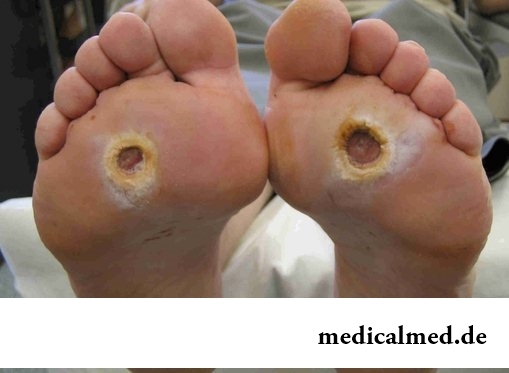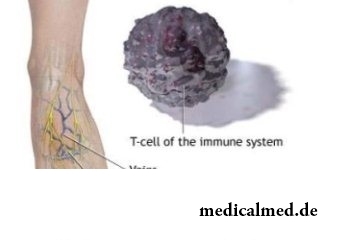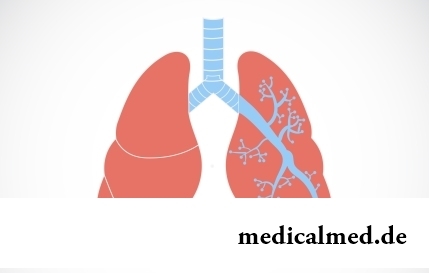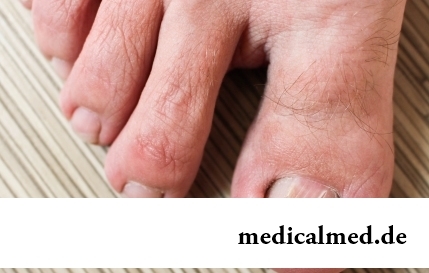





Diabetic foot

Diabetic foot, or syndrome of diabetic foot is the most frequent complication of a diabetes mellitus arising in 15-20 years after the beginning of a disease at approach of a stage of a decompensation.
In 90% of cases the syndrome of diabetic foot is diagnosed at a diabetes mellitus of the second type. The disease represents ulcer and necrotic damage of skin, soft tissues, and in hard cases and a bone tissue of foot. In the final stage diabetic foot leads to gangrene of an extremity from which two thirds of patients with a diabetes mellitus of the second type perish.
Reasons of development of a syndrome of diabetic foot
The stage of a decompensation of a diabetes mellitus is characterized by the high content of sugar in blood, and also sharp jumps of its level. It irritates destructively and vessels, are surprised vessels of a microcirculator bed in the beginning, and then and big. Disturbances of an innervation and blood supply result in insufficiency of a trophicity of fabrics. Foot is that part of a body which experiences the raised strain and is often injured, especially at diabetes as skin at diabetes differs in dryness, and on foot skin often there are giperkeratoza. As a result of a reduced innervation the patient does not notice small injuries – bruises, attritions, cuts, cracks. But in the conditions of the broken blood circulation protective function of fabrics is reduced, and any insignificant injury can bring to is long to not healing wound which at accession of an infection turns into an ulcer.
Types of diabetic foot
In 1991 the First International symposium on a syndrome of diabetic foot where the classification of this disease taking into account the prevailing defeat assumed as a basis by world medical community was developed took place. According to this classification, allocate the following types of diabetic foot:
- Neyropatichesky foot at which disturbances of an innervation prevail;
- Ischemic foot, disturbances from a microvascular bed prevail;
- The neuro and ischemic foot combining signs of the first and second forms.
Most often neyropatichesky foot, on the second place on frequency – the mixed form meets, ischemic foot is the most rare manifestation of a syndrome of diabetic foot. Depending on a look, approach to treatment of diabetic foot and the forecast of a disease depends.
Symptoms of diabetic foot
Symptoms of diabetic foot have the features, depending on a disease form.
- Symptoms of diabetic foot, neyropatichesky form. Pulse on arteries of feet without changes, skin of usual color is characterized by reduced sensitivity of foot, lack of pain. At survey the foot deformirovannost developing because of the wrong distribution of load of bones and joints of foot as a result of the broken innervation attracts attention. On foot the sites of a hyperkeratosis, callosities which are also caused by redistribution of loading. Smooth edges are characteristic of the ulcers which are formed at this form of diabetic foot.
- Symptoms of diabetic foot, ischemic form. There is no deformation of foot and callosity, sensitivity is kept, pulse on arteries of feet weak or is not defined. Feet are cold, pale color, are often edematous. Ulcers have uneven edges, are painful.
- Symptoms of diabetic foot at the mixed form of a disease combine signs of ischemic and neyropatichesky forms.

Manifestations of a syndrome of diabetic foot depends also on a disease stage. In clinic classification of diabetic foot by Wagner is applied:
- Zero stage, or risk group of development of diabetic foot. Foot is deformed, there is a hyperkeratosis, callosities, but there are no ulcers.
- First stage of diabetic foot. The superficial ulcer limited to skin limits.
- Second stage of diabetic foot. Deep ulcer. Not only skin, but also a hypodermic fatty tissue, sinews, muscular tissue, without damage of bones are involved in process.
- Third stage of diabetic foot. A deep ulcer with damage of a bone tissue.
- Fourth stage of diabetic foot. Limited gangrene.
- Fifth stage of diabetic foot. Extensive gangrene.
Diagnosis of diabetic foot
The diagnosis of a syndrome of diabetic foot comes easy because of existence in the anamnesis of diabetes and a characteristic clinical picture of a disease. For treatment establishment of a form and stage of process matters for what conduct a neurologic research, a detailed research of a blood-groove (an angiography, a dopplerometriya, doppler sonography, etc.), a blood analysis, a X-ray analysis of feet, a bacteriological research of contents of an ulcer.
Treatment of diabetic foot
Approach to treatment of diabetic foot depends on a type of a disease, however at any form of a disease of the main thing compensation of a diabetes mellitus and decrease in level of sugar in blood as elimination of the major disturbing factor is.
At an ischemic form treatment of diabetic foot consists in recovery of a blood-groove in an extremity for what use both therapeutic, and surgical methods. Appoint the medicamentous drugs which are improving blood circulation and removing hypostases, and also antibacterial agents. From surgical methods apply transdermal transluminal angioplasty (operation at which recover a blood stream in vessels without cutting skin, through a puncture in an artery); trombarteriektomiya or distal shunting by a vein. For the injured extremity the sparing mode is created, local processing of ulcers is carried out by antiseptic agents.
Treatment of diabetic foot in the neyropatichesky and mixed forms also consists in local processing of ulcers, to the general antibacterial therapy and improvement of a trophicity of feet, but special attention is paid to recovery of a normal innervation for what the drugs improving metabolism are used. At treatment of diabetic foot the refusal of smoking as tobacco has a negative impact on a microvascular bed is important, and in case of smoking the majority of actions can be inefficient or have only short-term effect.
Use of folk remedies at treatment of diabetic foot

Diabetic foot folk remedies at treatment can be recommended to the patient with a disease as auxiliary as at prolonged use of folk remedy can give good effect. One more advantage of their use is their soft action which is not doing harm.
For treatment of diabetic foot folk remedies as a rule use various medicinal substances of a natural origin in the form of trays, lotions and compresses. Broths and infusions of officinal herbs – camomiles pharmaceutical, a sage, an eucalyptus, a celandine are widely applied. Wound healing pastes on the basis of herbs or products of beekeeping which are imposed under a bandage for a period of several minutes till several o'clock are made.
However it is necessary to tell that at development of serious stages of a disease you should not rely on folk remedies as in this case treatment of diabetic foot demands active medical intervention and acceptance of urgent measures of medical care.
More than 500 million dollars a year are spent for allergy medicine only in the USA. All of you still believe that the way to finally win against an allergy will be found?

The advantage of swimming for the person is so high that this sport is not only the most popular, but also is widely applied in copper...
Section: Slideshow
Statistically cystitis 25-30% of women up to 40 years have. With age this indicator raises, besides many do not get to statistics because do not see a doctor. The most sad that after the regular visits to doctors, long reception of antibiotics...
Section: Articles about health
The words "disease" and "patient" not without reason come from one root – "pain". As a rule, symptoms of illnesses thoroughly spoil to patients life. However from this rule there are exceptions. Some diseases are shown by signs which can cause even positive emotions. It is a pity only that the majority of such illnesses are heavy and incurable....
Section: Articles about health
For anybody not a secret that the modern person eats not as his ancestors. For the last 100 years in broad access appeared with...
Section: Articles about health
Shops of household appliances offer us the huge choice of various devices for the house. Whether there are among this abundance devices which not only facilitate house work, but also help to keep health of the person? Of course, and we will tell about them today....
Section: Articles about health
Helminthosis is one of the most widespread diseases. Statistically, any species of helminths infected every third inhabitant of the planet. Most of specialists even consider these data strongly underestimated: some uninvited "cohabitants" do not cause the carriers serious troubles, and patients just do not see doctors. The situation is aggravated also with the fact that people know about specifics of similar illnesses very little. At many presence of worms is strong ассоциир...
Section: Articles about health
Tea is loved and use almost everything. This drink has tonic properties, contains the tannins capable podavlit...
Section: Articles about health
They say that to ensure health and longevity of people it is obliged. Really, at competent approach to these questions, minimization of an adverse effect of many factors does not represent a special problem. Practically everyone has an opportunity to play sports...
Section: Articles about health
For residents of the countries of Southeast Asia various algas are an obligatory component of a daily diet. Their popularity is connected not only with high tastes, but also with numerous curative properties. Russians are a little familiar with products such that is distressing: algas are so useful that they should be eaten as often as possible. Let's get acquainted closer with useful properties of this seafood....
Section: Articles about health
Residents of big cities quite often have a disease which is known as the syndrome of chronic fatigue (SCF) today. This illness...
Section: Articles about health
Diseases of joints often begin imperceptibly for the person. The first stages of destruction of the cartilaginous tissue providing soft and free sliding of heads of bones in joint bags proceed slowly and absolutely without serious consequences. Especially unpleasantly for that this пр...
Section: Articles about health
Scientists have no unambiguous opinion on a proximate cause of emergence of a carcinoma cutaneum today. Only the factors promoting development of this illness are precisely established. Treat them: long impact on skin of ultraviolet rays, radiation exposure, thermal injuries, injuries of skin by aggressive chemicals (pitches, acids, alkalis, etc.), genetic predisposition (existence of malignant new growths of skin in the family anamnesis), at...
Section: Articles about health
The word "onikhokriptoz" is unfamiliar to most of people, meanwhile quite so physicians call very widespread problem: growing...
Section: Articles about health
To look healthy and means well-groomed not only to be pleasant to people around, but also to feel strong, sure and taken place. Specialists in the field of cosmetology quite often note that whether not all women are able to look after skin...
Section: Articles about health
The stroke is one of the most widespread diseases of the person, annually in the world about 6 million cases of this pathology are registered. According to medical statistics, strokes occur almost three times more often than myocardial infarctions. The disease belongs to heavy, and has an unfavourable result: the lethality reaches 40% among women and 25% among men. A considerable part of the patients who endured a stroke cannot be recovered completely. We suggest readers to examine...
Section: Articles about health
According to data of World Health Organization, the cataract is diagnosed almost for 7% of the population of Earth. Statistics we get sick...
Section: Articles about health
One of the major chemical processes happening in a human body are oxidation reactions. They go with participation of fats and carbohydrates which we receive from food, and the oxygen getting to us from air. A main goal of such reactions is it is received...
Section: Articles about health
Cystitis, or inflammation of a mucous membrane of a bladder, this very widespread disease which, owing to some features of a structure of bodies of urinogenital system, women have approximately four times more often than men. Women aged from 20 up to 45 years enter into the main risk group. Cystitis is an illness of a bacterial origin. It can have an acute or chronic current. The second option is dangerous not only a frequent recurrence, серьезн...
Section: Articles about health
Bees – really unique beings. Practically all products of their life activity are used by the person. Since the most ancient times from...
Section: Articles about health
Almost each of us during life faced dissatisfaction with own body. At such moments, as a rule, we begin to shame ourselves, urgently we go on the most rigid diet promising minus of 10 kg in a week, or we exhaust ourselves in the gym to полусм...
Section: Articles about health
All are familiar with cold, and practically everyone believes that he has sufficient knowledge and experience that correctly to treat it. In practice most of people makes mistakes in attempts to get rid of rhinitis, and divides numerous delusions it....
Section: Articles about health
Phobia – the persuasive fear of a certain contents shown in a specific situation against the will of the person. Concepts of a phobia and fear...
Section: Articles about health
The drugs stopping or oppressing life activity of pathogenic microorganisms are widely applied in clinical practice from 40th years of the last century. Originally antibiotics were called only substances natural (animal, vegetable or микробног...
Section: Articles about health
There is a lot of fans of beer in our country. Statistically, on each average Russian (including women and children) in a year about 60 liters of this drink are consumed. It is not a lot of, as in the Czech Republic or Germany, but figure all the same impressive. There is nothing to rejoice here: despite assurances of producers that beer is absolutely harmless, effects of its active consumption cannot be considered positive in any way. Here only part of that negative impact, which popular нап...
Section: Articles about health
About 20% of the population of our planet have a hypertension (permanent increase in arterial pressure). This disease negatively narrations...
Section: Articles about health
Subfebrile temperature call fervescence to 38 degrees, and subfebrile condition - existence of such temperature over 3 days, and quite often it happens without the visible reasons. Existence of subfebrile condition - a strong indication of disturbances in an organism which can...
Section: Articles about health
Bathing in broths of medical flowers and plants (phytobathtub) was eurysynusic since Cleopatra who is a good judge in all that concerns beauty and health. And today phytobathtubs is the simple and available means allowing not only to remove nervous tension, but also to recover from many diseases. Grass bathtubs at treatment of cold, osteochondrosis, radiculitis, skin diseases, and also diseases of urinary tract and vessels are especially effective....
Section: Articles about health
